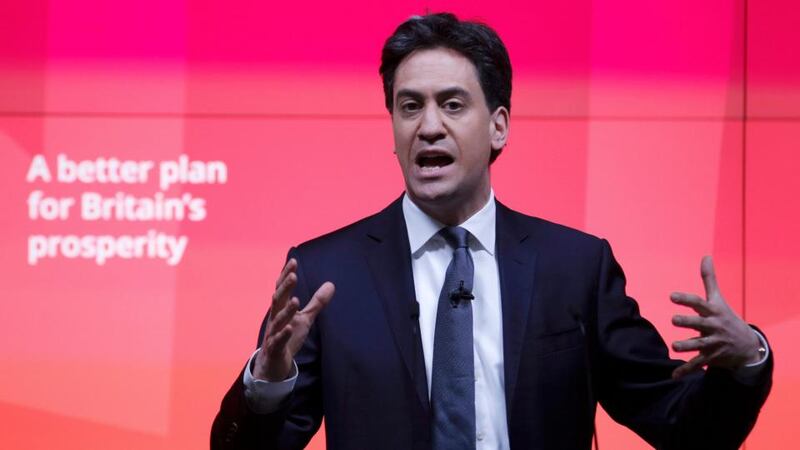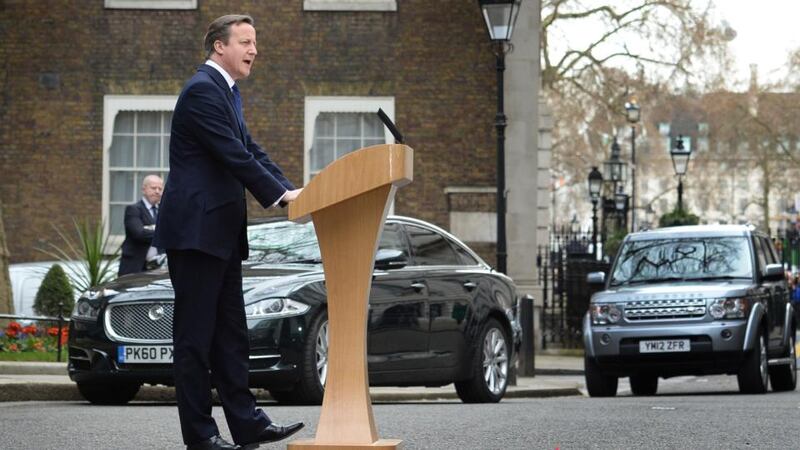Campaigning in Britain's closest election in decades ramped up on Monday after prime minister David Cameron met Queen Elizabeth to tell her parliament had been dissolved, teeing up a fraught battle to govern.
Mr Cameron made the journey to Buckingham Palace in an armoured limousine as TV crews buzzed overhead, a formality marking the end of five years of coalition government between his Conservatives and the Liberal Democrats.
Britain excels at set-piece constitutional events but the consequences of the May 7th election - which polls predict nobody will win with an outright majority - look more disorderly.


Membership of the EU could hang on the outcome as does the future of the increasingly frayed relationship between the United Kingdom and its most restive part: Scotland.
Standing in front of his Downing Street office after meeting the queen, Mr Cameron told voters he had presided over an economic recovery that needed cementing.
"In 38 days you face a stark choice," he said. "The next prime minister walking through that door will be me or (Labour leader) Ed Miliband. You can choose an economy that grows...or you can choose the economic chaos of Ed Miliband."
‘Clear and present’ danger
Mr Miliband, speaking at an event meant to dispel criticism that his party is anti-business, said Labour offered a fairer economic plan and warned Mr Cameron's plan to hold an EU membership referendum posed a "clear and present" danger.
“It is a recipe for two years of uncertainty in which inward investment will drain away,” he said.
In a sign of how fragmented Britain’s political landscape has become, Mr Cameron and Mr Miliband will join the leaders of five other parties on Thursday for a seven-way TV debate.
Both the Conservatives and Labour say they want to better manage immigration and pump more money into the state health service. The main difference between them is on the budget deficit. The Conservatives promise to cut it faster, Labour says it would do so more slowly.
Latest opinion polls underscored the electoral uncertainty. One gave Labour a four point lead, the other put the Conservatives ahead by the same margin.
Most polls put the two neck-and-neck. None gives either party enough support to govern alone. That means the winner may need to rule in minority, relying on others on an issue-by-issue basis, or enter a formal coalition with another party.
EU referendum
If Mr Cameron is re-elected, he has promised to deliver an EU membership referendum by the end of 2017, raising the spectre of Britain leaving the bloc, something the United States and much of UK business has made clear it doesn't want.
If Britain voted to leave the EU, Scottish nationalists have signalled they would push for another independence referendum, even though they lost one just last year. Labour opposes an EU referendum.
Buffeted by immigration from eastern Europe after 10 mostly former communist states joined the EU, many voters blame the EU at a time of austerity for pressure on wages and school and hospital places.
Mr Cameron promised to reduce annual net migration to the “tens of thousands”. Instead, it is running at around 300,000.
The issue has helped fuel the rise of the anti-EU UK Independence Party (UKIP), a party sometimes compared to the US Tea Party movement. It wants sharply lower immigration and a swift British exit from the EU.
Britain’s first-past-the-post electoral system means UKIP is unlikely to win more than half a dozen of 650 parliamentary seats while finishing second in large numbers of them.
But it has the power to take large numbers of Conservative votes, and some from Labour too, making it harder for Mr Cameron to win. A likely collapse of the Liberal Democrat vote is also up for grabs.
Reuters











